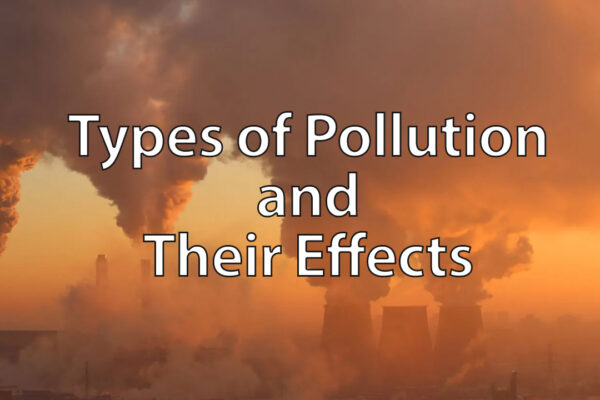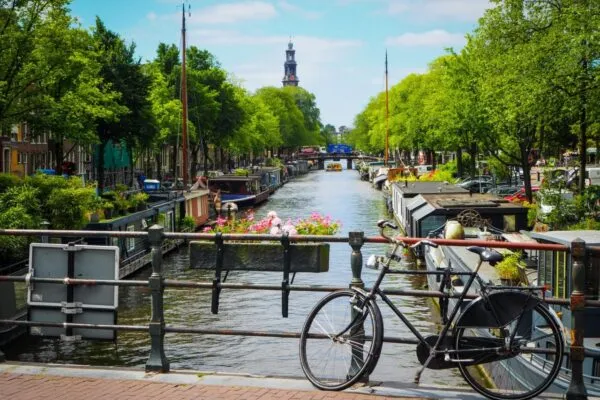Poison in the Air: Depressing Story of Delhi Choking on Air Pollution
The story of Delhi air pollution is nothing new. The timeline goes two decades back when the national capital of India started smothering on polluted air. Many years have passed and nothing’s changed, except for the air quality of Delhi which has worsened over time. Hence, gaining the city the title of the “world’s most polluted capital.” Every year, the air quality deteriorates in Delhi slowly turning it into a gas chamber.
Table of Contents
A Brief History
The traces of air pollution in the major cities of the Indian subcontinent go back to the ‘90s when cities started turning into a toxic nightmare. In the 1980s the government formulated strong laws to prevent air pollution including the Air (Prevention and Control of Pollution) Act, 1981 and the Environment (Protection) Act, 1986. In the wake of the situation, institutions such as the Central Pollution Control Board (CPCB) and state pollution control boards were formed to keep tabs on the quality of air.
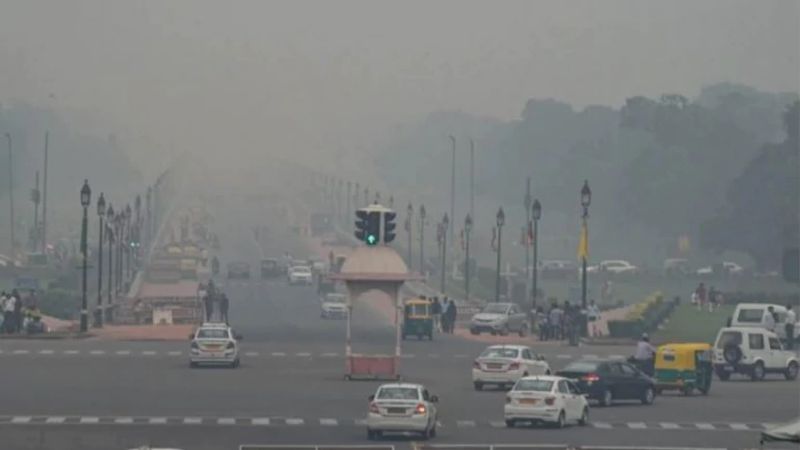
Deteriorating Delhi air poses health hazards for everyone in city premises / Image: India Today
In 1996, Delhi-based non-profit Centre for Science and Environment on air pollution in Delhi released Slow Murder, a report that documented the horror story of air pollution caused by vehicles in major cities like Delhi, Mumbai, and Kolkata. The release of this report prompted the Supreme Court (SC) to issue a suo moto notice to the Delhi government to submit an action plan to control the air pollution in the city.
In January 1998, the Union Ministry of Environment and Forest or MOEF (now the Ministry of Environment, Forest and Climate Change – MOEFCC) constituted the Environment Pollution (Prevention and Control) Authority (EPCA) for National Capital Region (NCR). The government also launched the National Air Quality Programme (NAMP), a network of monitoring stations across the country to regularly monitor the key pollutants whole year-round.
Despite all the legislation and pollution control boards, the cities keep sinking deeper and deeper in the shroud of smog, especially Delhi. For the past few years, the air quality of Delhi has been fluctuating between very poor and severe categories of the Air Quality Index (AQI).
Delhi’s Plight and Key Problem Areas
Once one of the most beautiful cities of the country with a rich historical heritage, Delhi has become a cloud of dust and smoke over the years. The air quality stays in the poor state throughout the year except for winters when it deteriorates even further.
Air quality index of Delhi is usually Moderate (101-200) level from January to September, but then it drastically degrades to Very Poor (301-400), Severe (401-500) or Hazardous (500+) levels during the chilly months from October to December owing to various factors contributing to air pollution. The key problem areas with severe air pollution in and around Delhi include Mundka, Bhiwadi, Dwarka, Faridabad, Delhi Technological University, Ghazipur, and Noida among many others.
In 2017, the air pollution in the city was so severe that it was termed as Great Smog of Delhi. The year 2018 wasn’t any better and 2019 brought such horrifying levels of polluted air that EPCA had to declare a public health emergency. The constructions were banned and schools were shut for a while.
In the month of November, SC ordered the Delhi government to take stringent actions against air pollution. The SC judges even implied that it’s better to kill the citizens in one bomb blast rather than letting them suffer in the harmful atmosphere of the city.
Factors Contributing to Delhi Air Pollution
The major contributing factors to Delhi air pollution are motorized road transport, dust on roads, construction sites, brick kilns around the city, polluting industries, coal-fired power plants, and biomass burning.
Apart from the man-created problems, geographical and meteorological conditions also help the escalating levels of air pollution in the national capital. These factors take an already bad situation and spiral it out of control.
Also Read: By 2025, Delhi Will Record World’s Highest Premature Deaths Due to Air Pollution
The lack of winds that can carry away pollutants is one of the most important factors impacting air quality. Delhi lies to the north-east of Thar Desert, to the north-west of the central plains and to the south-west of the Himalayas. The pollutants picked up by the coastal winds get trapped between the poor geographical location of the city. The returning monsoon and arrival of winters also create a bad scenario. Low wind speed and high density of moisture in the air traps the pollutants inside the city sphere.
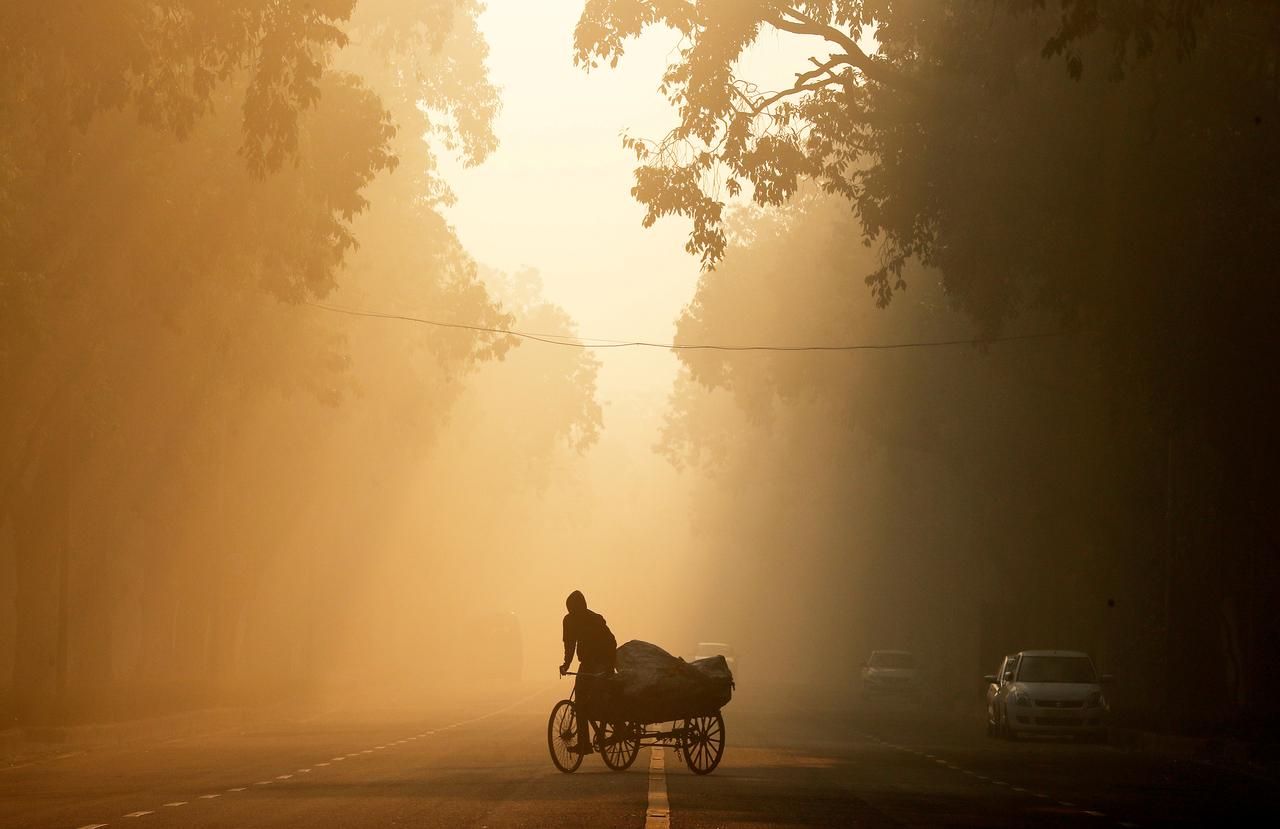
Multiple factors contributing to the worsening crisis / Image Credit: REUTERS/Adnan Abidi
Another major factor that worsens air pollution more than anything else during the winter season in Delhi is stubble burning in the neighboring states. The farmers in Punjab and Haryana burn the paddy crop residue before the sowing of wheat in October. These farm fires go on for almost a month. The northeast winds carry the smoke towards the national capital which gets trapped there and fuels the air pollution.
While the outdoor air pollution can cause many inconveniences and health issues, indoor air pollution is worse. It is a common perception that staying indoors can protect from the polluted air. But, a recent study by British technology company Dyson and SGS China reveals unsettling results. There are various serious issues such as formaldehyde, dust mites, mould, and bacteria that are affecting the health of residents, especially children and elderly who stay indoors most.
Researchers from the University of Surrey in the UK have revealed in a study that local sources of pollution like vehicular emission, construction activities, and domestic heating release a significant amount of pollutant into Delhi air.
Major Pollutants and Their Effects
India is the third-largest country in the emissions of greenhouse gases after China and US. The increased emissions contribute to the growth of pollution sources such as particulates, carbon monoxide, black carbon (soot), dioxins, furans, and mercury.
The AQI monitors PM 10 and PM 2.5, Ozone, Nitrogen oxide, Sulphur dioxide, and carbon monoxide. The particulate matter belongs to Group-1 of Carcinogens, which penetrates deep into lungs and bloodstreams causing permanent DNA mutations, heart attacks, respiratory disease, lung cancer, and premature deaths.
Air pollution can cause various health problems including strokes, brain cancer, miscarriage, and other mental illnesses. It’s been also held responsible for Parkinson’s disease, diabetes, thrombophlebitis and thromboembolism, dementia, brittle bones and damaged skin, and liver problems.
Air pollution kills over a million Indians every year and the mortality rate is likely to increase many folds if the air pollution is left unchecked. Families are thrown into a spiraling cycle of hospital visits, critically poor health and financial trouble impacting their productivity and ability to participate in the economy.
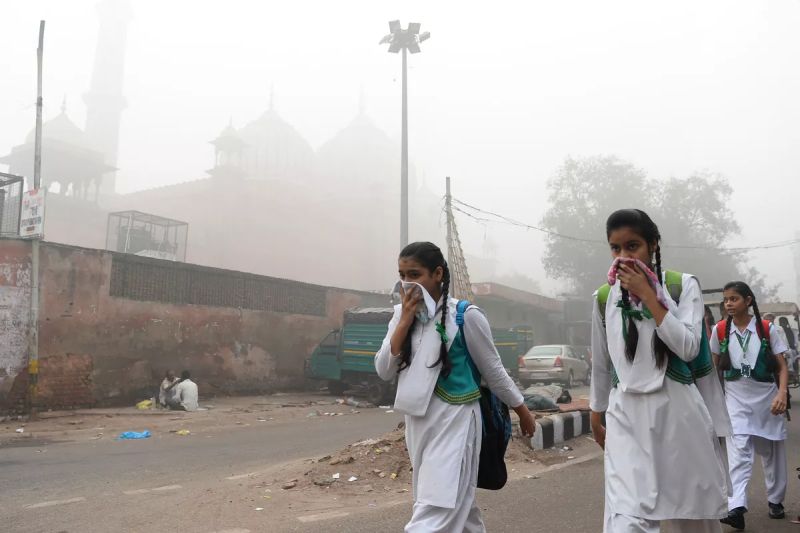
Children are most affected by the polluted air / Image: Vox
The increase in particulate matter decreases the visibility and disrupts all transportation systems. Getting involved in outdoor activities exposes the citizens to health hazards disturbing their routine as they go about their day. Children and senior citizens are the most affected by the air pollution crisis. Pollution-related health problems are very common among the children in Delhi, which stick with them throughout their entire life.
Many people have moved out of the city for the safety of their families. Many have left the country altogether. These people gave up on their former lives and jobs in order to protect their families from the hazardous effects of the noxious Delhi air.
The effects of indoor air pollution can range from mild symptoms like fatigue, dizziness, watering of eyes to severe respiratory disorders and cardiovascular diseases.
What is more scary is that scientists believe that air pollution can affect the unborn children as well. In an experiment conducted at Texas A&M University, researchers exposed pregnant rats to ultrafine ammonium sulphate, which was associated with greater chances of premature births, low birth weights, and stillbirths.
Solutions in Motion
In October 2016, Delhi faced one of its worst smog incidents. The PM2.5 levels rose to over 750 microgramme per cubic metre, over 12.5 times the permissible limit. So, the government introduced Graded Response Action Plan (GRAP) to combat the situation.
GRAP contains measures to reduce the addition of fresh emission load during high pollution episodes that have been observed in Delhi in November every year since 2016. The severity of actions under this graded plan increases on the basis of air quality index levels.
During the implementation of GRAP, the entry of trucks and construction activities gets banned in the city, and the authorities activate the odd-even scheme for private vehicles. The odd-even scheme of the Delhi government is a traffic rationing measure under which private vehicles ending with an odd digit will only be allowed on roads on odd dates and those with an even digit on even dates.
Efficacy of These Measures
Nonetheless, these prompt measures to control the air pollution in Delhi have not proven much of use. The growing industries and number of vehicles keep nullifying these solutions by increasing the emission.
There are few other possible solutions that have quite some potential to improve the situation a bit. To reinvent the capital, reclaiming the streets seems like a good idea but through pedestrians, cyclists, and car-free zones. The electrification of vehicles can reduce a significant amount of vehicular emissions. E-rickshaws in Delhi has already made little improvement in that aspect.
Karol Bagh and Lajpat Nagar markets have been car-free zones for some time now and with non-motorised lanes and pedestrian lanes, the area looks much better. Connaught Place has also gone under the same process of a car-free zone.
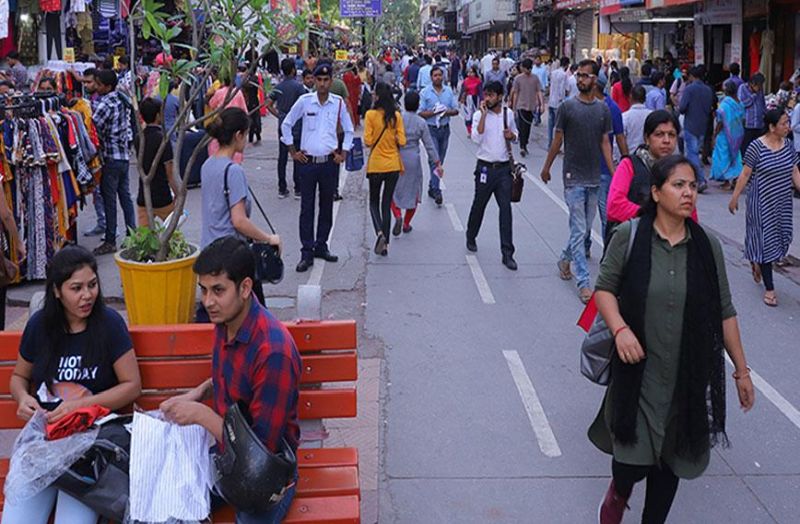
Car-free zone in Karol Bagh marketplace / Image: Civil Society
Although many laws and plans have been implemented to control the pollution in the city, there is much that needs to be done. There are many possible ways to handle this situation of air pollution in Delhi specifically and in the whole country in general.
Discouraging farmers from burning the crop residue, eliminating the use of fossil fuels for energy in industrial areas and encouraging people to switch to public transportation are some of the potential solutions. The citizens can adopt a few methods to protect themselves from the impacts of air pollution.
Forget months or weeks, Delhi only has had a couple of days of good air in the past few years. It is crucial to eliminate air pollution in Delhi or the time is not far when Delhi will just be an abandoned city with only a handful of people left to fight the lost cause.
